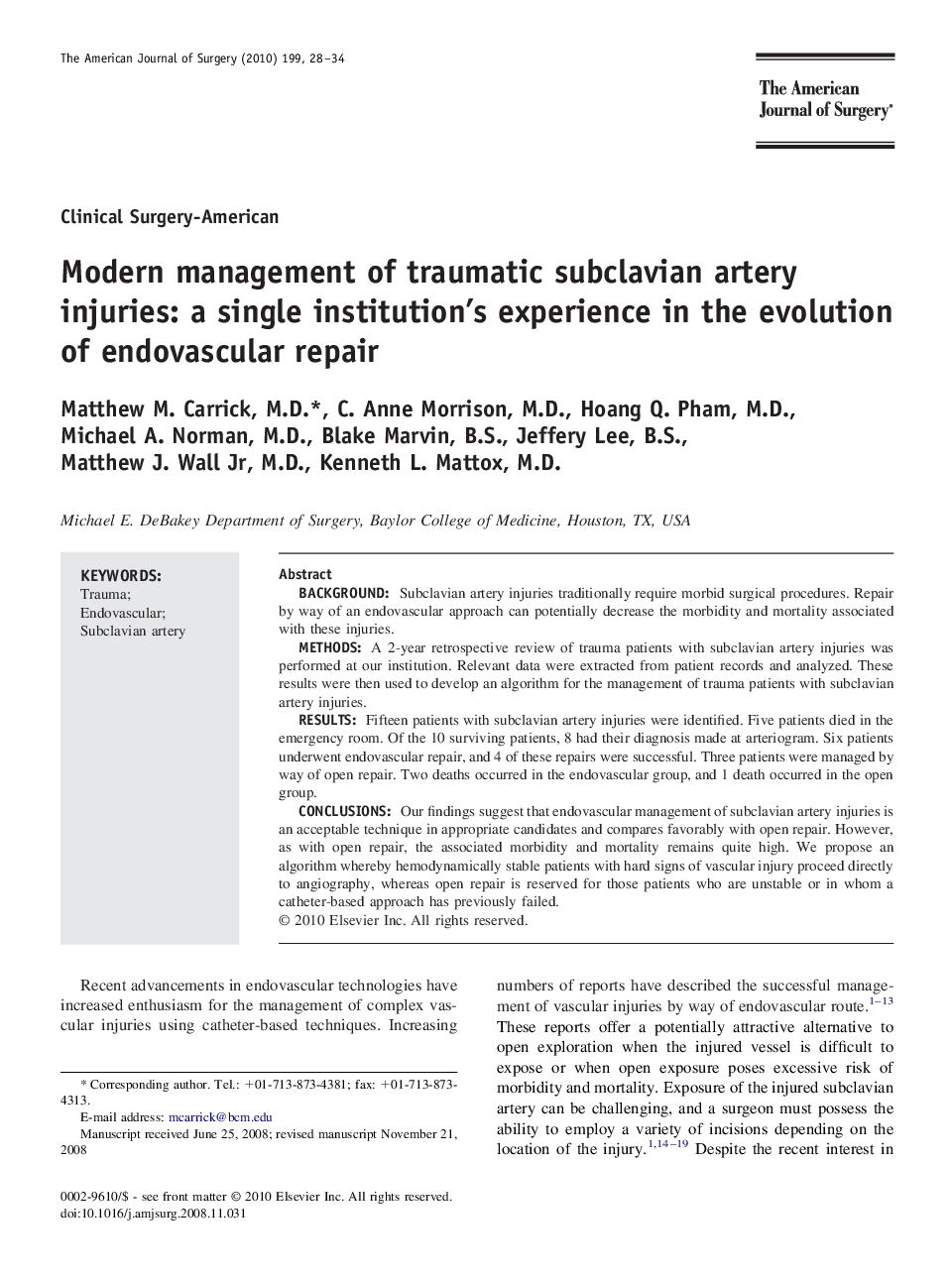| Article ID | Journal | Published Year | Pages | File Type |
|---|---|---|---|---|
| 4280434 | The American Journal of Surgery | 2010 | 7 Pages |
BackgroundSubclavian artery injuries traditionally require morbid surgical procedures. Repair by way of an endovascular approach can potentially decrease the morbidity and mortality associated with these injuries.MethodsA 2-year retrospective review of trauma patients with subclavian artery injuries was performed at our institution. Relevant data were extracted from patient records and analyzed. These results were then used to develop an algorithm for the management of trauma patients with subclavian artery injuries.ResultsFifteen patients with subclavian artery injuries were identified. Five patients died in the emergency room. Of the 10 surviving patients, 8 had their diagnosis made at arteriogram. Six patients underwent endovascular repair, and 4 of these repairs were successful. Three patients were managed by way of open repair. Two deaths occurred in the endovascular group, and 1 death occurred in the open group.ConclusionsOur findings suggest that endovascular management of subclavian artery injuries is an acceptable technique in appropriate candidates and compares favorably with open repair. However, as with open repair, the associated morbidity and mortality remains quite high. We propose an algorithm whereby hemodynamically stable patients with hard signs of vascular injury proceed directly to angiography, whereas open repair is reserved for those patients who are unstable or in whom a catheter-based approach has previously failed.
